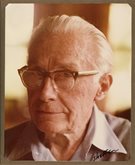The POSNA Hall of Fame provides an enduring history to honor those POSNA members who have displayed dedication to the Pediatric Orthopaedic Society of North America, teaching and mentoring, studying musculoskeletal conditions in children and caring for children with musculoskeletal conditions. Nominations for inductees are taken each fall by the POSNA membership and selected by the Awards Committee and members of the Hall of Fame.
Hall of Fame Categories: Leadership, Diversity, Teacher, Humanitarian, Hero, Triumph over Adversity, Pioneer, Contributions to Literature, Home Person (one who does the real work while others go to meetings), Fox-Hole Buddy (reliable person when the stakes are high), Exceptional Clinician, POSNA Service
Eligibility:
- POSNA member for at least 15 years
- Minimum age of 60 years
- Inaugural Class (2019) includes all previous Distinguished Achievement Award recipients

